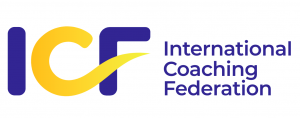Day to day Allignment ….

I spent this morning reading two journals from a professional development organisation. What started off as a curiosity and relaxing half hour with a coffee, quickly became a deeper reflective exercise. There were numerous articles about individuals which read as egotistical narrative CVs.
Written with a huge ‘past’ orientation, they were celebrating the contributions of these individuals to the profession and whilst presenting mildly interesting (often personal rather than professional) facts, there was very little about future vision and mission, strategies for collaboration and achievement even survival of the profession although several talked about ‘dreams’. It was more about ‘I’ than ‘we’ with little about developing the field, the knowledge base or the future impact of the profession. I felt a sense of stagnation and a frustration with a lack of knowing about plans for bright horizons.
So … what did all this have to do with me? Accepting that I have a future orientation and little interest in a past that cannot be changed, the big focus for me was the lack of ‘alignment’ or collaboration with others. There was so little coherence and connection that the journals seemed to be a micro example of how the world is living today.
‘Alignment’ is both a state and a process. The state being part of the identity that comes from membership of the profession or specific organisation, and in this case the overlap between the individual identity and that of the peer group (Dutton, Dukerich & Harquail, 1994). Alignment is an unconscious, immediate, unified response without detailed planning, task analysis and allocation of roles in an environment that is ever changing. It is about an evolutionary, flexible and trusting move forward in harmony to build a successful outcome where all contributions are respected and built on. It is about unified growth!
The process comes from the joining of the ‘I’ and the ‘we’ and how the professional unconsciously changes or evolves to stay in balance (Kreiner, Hollensbee & Sheep, 2006). It can be debated as to whether ‘I’ the professional, exists. This could happen where a professional is a sole trader, and holds the individual identity of ‘being’ the organisation or the profession and the associated responsibility, and is therefore disassociated from the team/group and a sense of belonging to a collective.
Professionals need to review both intrapersonal and interpersonal ways of working, at the same time working collaboratively within the profession to aid development. Much is written about identity and previous research suggests a constant search for self and ‘being’ authentic, finding meaning in what it is to be who we are. There is an interplay or dynamic here between self as ‘subject’ where ‘alignment’ is a quality of experience, self as ‘object’ where ‘alignment’ is a characteristic and self as an ‘evolution’ where ‘alignment’ is a favourable progression and yet is so much more.
The higher one’s status in a profession, the more authentic and connected to ones’ self and the holistic system one has the opportunity to become. This questions how professionals are able to achieve this sustainably when there is so much external pressure placed on them to conform with the expectations of the market place. The concept of alignment is defined as having harmony and equilibrium in their lives, so as to have the composure, stability, authenticity and connection to form a springboard from which to respond to various contexts. This could be ‘intra-alignment’ (within self) or inter-alignment (between self and others) and these integration tactics, go some way to dissolving the tensions between group and personal identity and merge social and personal identity (Kreiner & Sheep,2008).
This sense of ‘being’ rather than ‘posturing’ gives us a freedom to work ecologically and in balance, to use the wisdom of the simple, single celled amoeba to retain a sense of ‘core self’, whilst flexing, changing, moving according to the needs of the contexts in which we find ourselves. This ability to continually evolve reduces ‘stuckness’ and enables us to contribute to a profession we will leave as a legacy to a world of which we could be justifiably proud.
I debate how it can possibly be more appropriate to work from the ‘safe haven’ perspective, of what could be termed ‘guru status’, (Kreiner & Sheep, 2008) than from taking risks by experimenting with possible selves in order to cause transformational change and whether individuals have the coping strategies to manage this (Kristof,1996). It would appear that the focus of being the ‘docile bodies’ mooted by Foucault (1977) needs to change from being ‘compliant’ to the status quo, and become ‘compliant’ with the much needed change agenda for both the professions and the wider contexts.
I leave you with three questions;
- What are the core characteristics of the identity challenges faced by you today?
- What individual tensions result from these challenges?
- How do you align identity work to respond to these challenges and tensions?
Dr Sally Vanson is an executive coach, working with identity challenges in senior professionals. Contact sally@theperformancesolution.com for a confidential introductory discussion about your personal and organisational needs.





